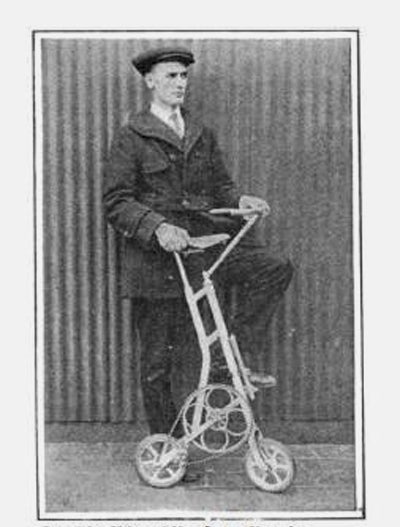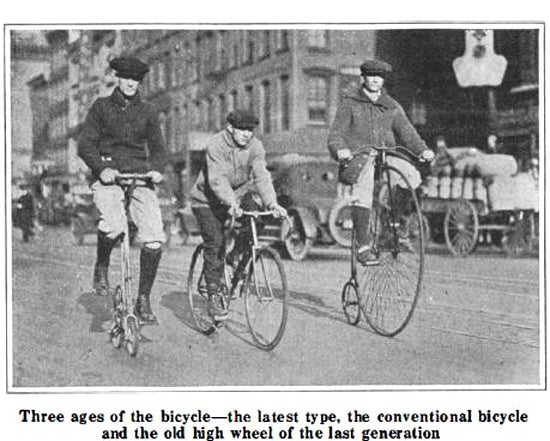This article was published in Scientific American’s former blog network and reflects the views of the author, not necessarily those of Scientific American
The "Inventions" section of the December 27th, 1919, issue of Scientific American featured a new model of the bicycle invented by Mr. C. H. Clark that seemed rather strange to those who saw it debut at the six-day bicycle race in New York City. Onlookers "were astonished one day at the appearance on the track of a rider, peddling away on a machine whose wheels had apparently shrunk to the size of a small dinner plate [sic]."

On supporting science journalism
If you're enjoying this article, consider supporting our award-winning journalism by subscribing. By purchasing a subscription you are helping to ensure the future of impactful stories about the discoveries and ideas shaping our world today.
The small bicycle rider was able to keep up with the leaders of the race, only having trouble reducing his speed to stay on the inside of the curve when making a turn. While he did not win the race, he made it much more interesting to watch.

According to the article, Mr. Clark paid a visit to the offices of Scientific American with his invention and offered the editor a ride. The editor questioned the inventor about the advantages of his strange looking vehicle, soliciting the following response:
"I did not have to leave the wheel at the curb and invite you down to the street to see it. I brought the machine up with me, not in the freight lift, but in a crowded passenger elevator, and neither the starter or the operator offered the slightest objection."
One can still spot these "city bicycles" today, now made with the advantage of being able to be folded for easier storage.